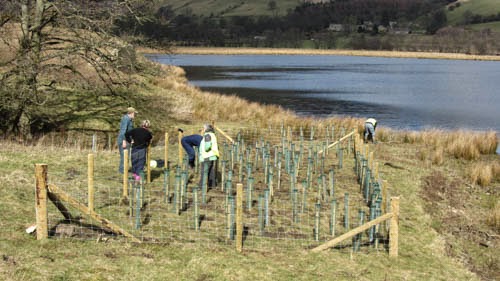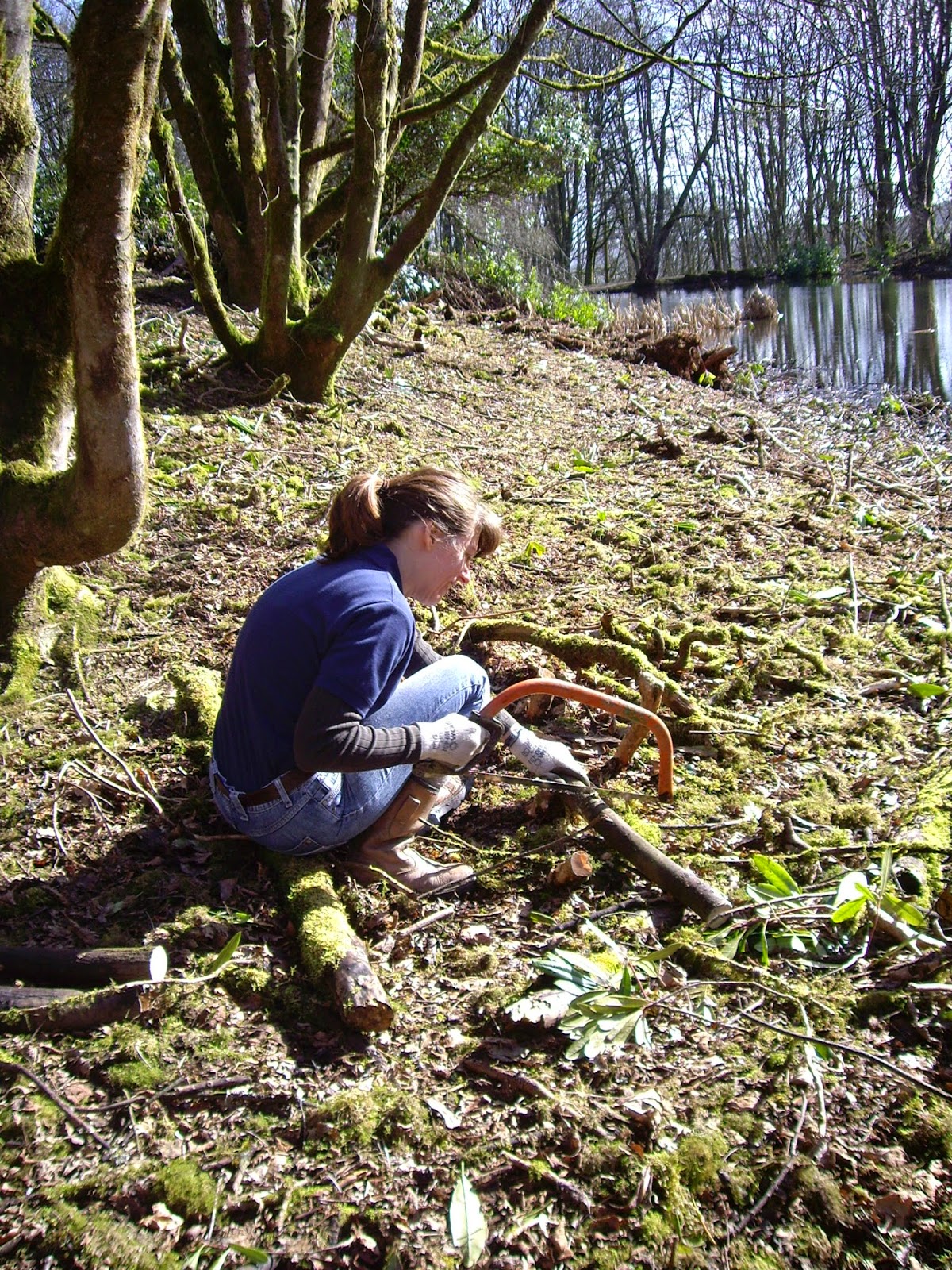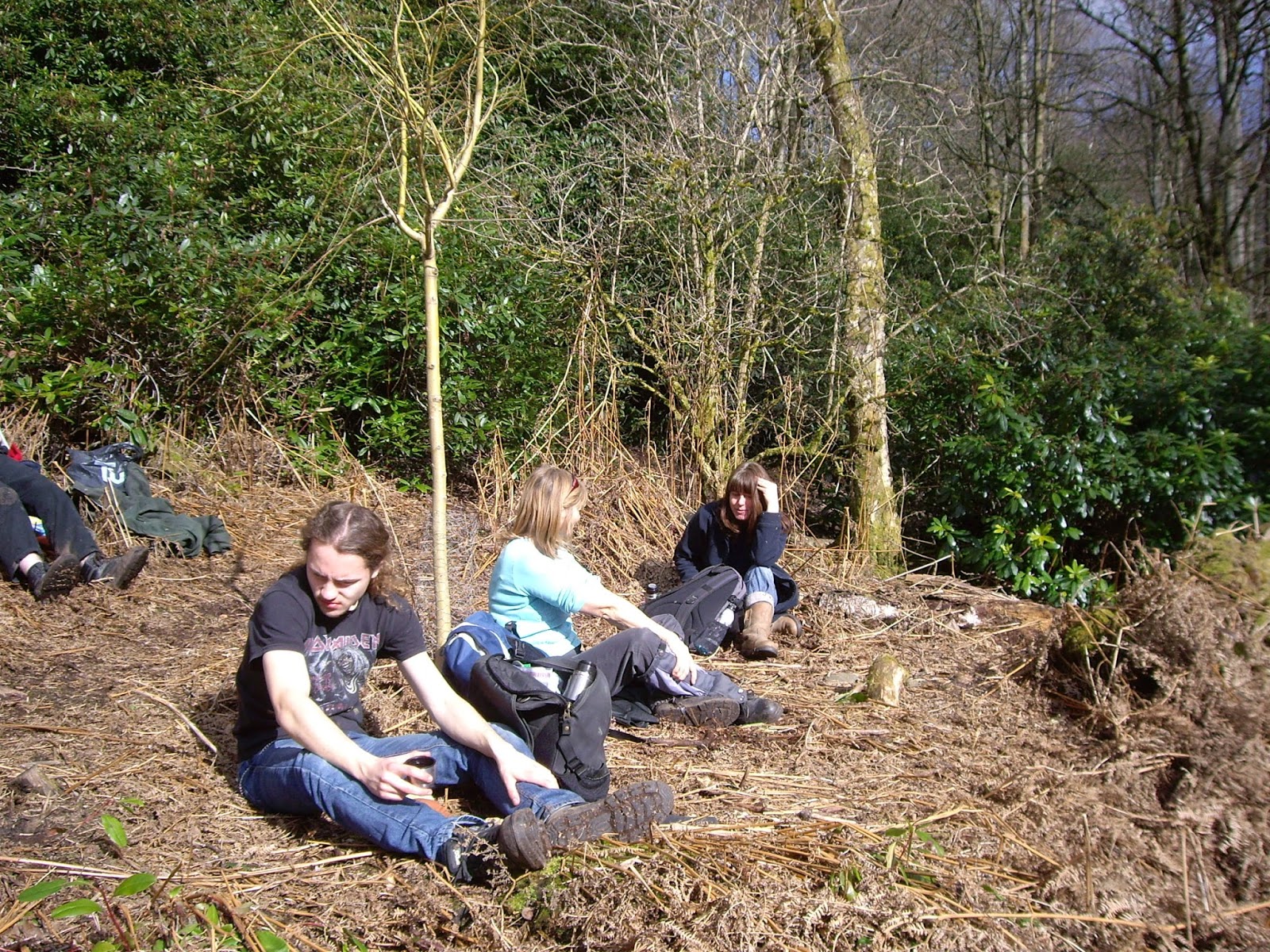Remember last week? Well this week was more of the same - only for two days rather than one. With 1600 trees waiting around in plastic bags the NCVs needed to get a crack on - and so we did.
7 turned out on Monday and, on Tuesday 14 reported for duty, along with one of the students and his tutor, for another exciting day on the hillside at Longside farm. (There was plenty of cake and flapjack to be had - thanks to Paul, Rhona and Audrey!)
Unfortunately, although the weather was reasonably kind on Monday, by lunchtime on Tuesday we had to abandon ship due to the appalling weather conditions. Battling against high winds and sleety showers was no fun. The remaining trees (still lots and lots) had to be taken back to the tree nursery where they were heeled into the soil to help keep them in good condition for next week's planting. Some photos from the two days can be seen below.
Ros E.
On Monday Jo and Mike enjoyed working on
the flat area at the bottom edge of the site.....
....whilst Paul and Osian had to toil up to the top wall to fetch more stakes
which were 'wanged' downhill. It has been suggested that 'stake bundle wanging'
should figure as an event in the next Olympic Games.
By the end of Monday afternoon there were still many trees left.
Thank goodness we now have a trailer to put all our gear in!!
On Tuesday Osian was in danger of losing his tubes
as he carried them up to where they needed to be.
"I'm sure there is a tree or two left in this bag."
Everyone enjoyed the coffee break and
flapjack before the rain started.
An NCV bows down to pay homage
to the tree gods above.
Tubes sprouted up all over the place,
struggling to remain vertical in the high winds.
A video of the view from the top of the hill -
if you can't get the sound to work then just imagine
being in a force 10 gale whilst standing here.
The well travelled trees are given a more suitable
venue to spend the Easter weekend. They are getting
fed up of travelling up and down the dale in bags!
Back home many muddy pairs of gloves were washed
and an empty hanging basket used an aerial glove dryer.
On Tuesday Osian was in danger of losing his tubes
as he carried them up to where they needed to be.
"I'm sure there is a tree or two left in this bag."
Everyone enjoyed the coffee break and
flapjack before the rain started.
An NCV bows down to pay homage
to the tree gods above.
Tubes sprouted up all over the place,
struggling to remain vertical in the high winds.
if you can't get the sound to work then just imagine
being in a force 10 gale whilst standing here.
The well travelled trees are given a more suitable
venue to spend the Easter weekend. They are getting
fed up of travelling up and down the dale in bags!
Back home many muddy pairs of gloves were washed
and an empty hanging basket used an aerial glove dryer.














































